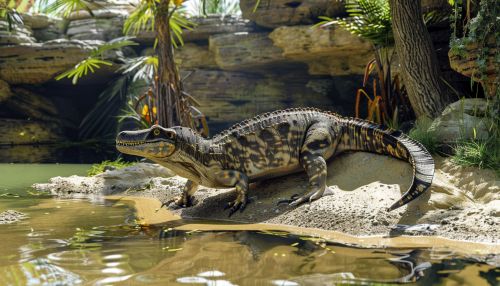Plesiadapiformes
Overview
Plesiadapiforms are an extinct order of mammals that lived from the Late Cretaceous to the Eocene epochs. They are considered to be the earliest known group of primates, or a sister group to the primates, depending on the classification system used. Their fossil record provides crucial insights into the evolutionary history of primates and the origins of human beings.
Morphology and Anatomy
Plesiadapiforms were small to medium-sized mammals, with body sizes ranging from that of a mouse to that of a cat. They exhibited a wide range of morphological diversity, reflecting their adaptation to different ecological niches. Some species were arboreal, while others were terrestrial or semi-arboreal. Their skeletal structure, particularly the shape and arrangement of the teeth and the structure of the limbs and feet, provides clues to their lifestyle and diet.


Dentition
The dentition of Plesiadapiforms is one of their most distinctive features. They had a unique dental formula, with a large number of incisors, canines, premolars, and molars. The incisors were enlarged and procumbent, suggesting that they were used for gnawing. The canines were relatively small and non-differentiated, unlike the enlarged canines seen in many modern primates. The premolars and molars were adapted for a diet of fruits and leaves, with high, sharp cusps for crushing and grinding plant material.
Limbs and Locomotion
The limb structure of Plesiadapiforms indicates that they were adapted for a variety of locomotor behaviors. Some species had long, grasping fingers and toes, suggesting that they were adept climbers. Others had shorter, more robust limbs, indicating a more terrestrial lifestyle. The structure of the foot, particularly the presence of a grasping hallux (big toe), is a key feature distinguishing Plesiadapiforms from other early mammals.
Evolutionary Relationships
The exact evolutionary relationships of Plesiadapiforms to other mammals, and particularly to modern primates, is a subject of ongoing debate. They are generally considered to be either the earliest known primates, or a sister group to the primates. This distinction is based on differences in dental and skeletal morphology, as well as molecular data.
Plesiadapiforms as Primates
Some researchers argue that Plesiadapiforms should be classified as primates, based on shared characteristics such as the presence of a postorbital bar (a bony ring around the eye socket), a grasping hallux, and a similar dental formula. This view is supported by some molecular data, which suggests a close genetic relationship between Plesiadapiforms and modern primates.
Plesiadapiforms as a Sister Group to Primates
Other researchers argue that Plesiadapiforms are not true primates, but rather a sister group to the primates. This view is based on differences in dental and skeletal morphology, as well as the absence of certain key primate characteristics, such as a reduced snout and forward-facing eyes. This view is supported by some fossil evidence, which suggests that Plesiadapiforms and primates evolved from a common ancestor, but followed different evolutionary paths.
Ecological Role and Extinction
Plesiadapiforms were a diverse and successful group of mammals, occupying a wide range of ecological niches. They were primarily herbivorous, feeding on a diet of fruits, leaves, and possibly insects. Their extinction at the end of the Eocene epoch is thought to be related to changes in climate and vegetation, which led to a decline in the forest habitats they depended on.
